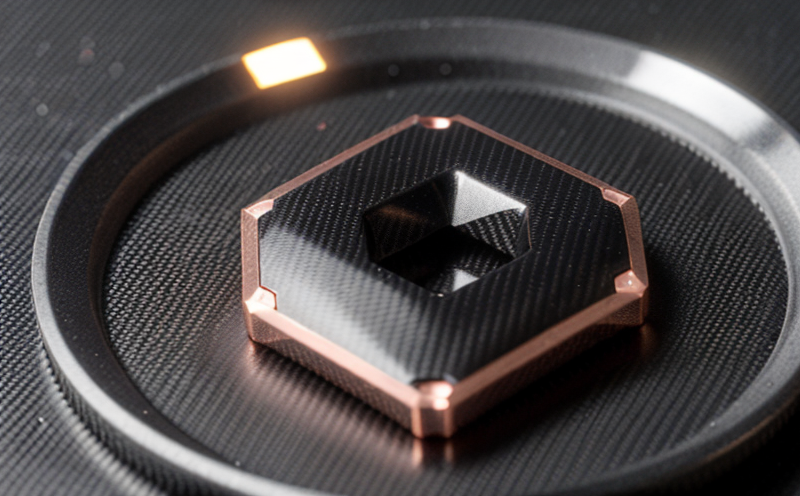DIN EN 17199 Respirable Fraction Analysis of Graphene Particulates
The DIN EN 17199 standard provides a stringent framework for analyzing the respirable fraction of graphene particulates, ensuring that manufacturers and users can assess and mitigate potential respiratory risks associated with these nanomaterials. This service is crucial in sectors such as electronics, composites, and coatings where graphene-based products are integrated into consumer goods or industrial processes.
Respirable fractions refer to the airborne particles small enough to be inhaled deeply into the lungs, posing significant health concerns. DIN EN 17199 specifically targets particulates less than 20 micrometers (µm) in diameter that can penetrate deep into lung tissues. Graphene, due to its unique structure and high surface area, can potentially pose inhalation risks if not properly managed.
The test methodology outlined in DIN EN 17199 involves several key steps: sampling, sieving, gravimetric analysis, and finally, the use of a cascade impactor for size distribution determination. The cascade impactor measures particle sizes from about 0.3 to 10 µm in diameter, which is critical for understanding the respirable fraction.
The importance of this test cannot be overstated. It ensures that products containing graphene are safe for use and handling by providing data on the size distribution and concentration of respirable particulates. This information is essential for regulatory compliance, product safety, and public health protection.
Compliance with DIN EN 17199 is vital in industries such as electronics, where graphene-based materials are used to enhance conductivity or thermal properties. In composites, it ensures that the use of graphene does not lead to hazardous exposure during manufacturing or end-of-life disposal. For coatings and paints, this test helps prevent accidental inhalation hazards when applying these materials.
The DIN EN 17199 Respirable Fraction Analysis is a critical step in the development lifecycle of graphene-based products. By identifying respirable particulates early in the process, manufacturers can design safer products or implement processes that minimize exposure risks. This proactive approach not only protects end-users but also enhances corporate reputation and market competitiveness.
The testing process involves several stages:
- Sampling: Collecting representative samples of graphene-based materials under controlled conditions.
- Sieving: Using sieves to separate particulates into size fractions, focusing on those less than 20 µm in diameter.
- Gravimetric Analysis: Weighing the collected fractions to determine their mass distribution.
- Cascade Impactor Measurement: Determining the size distribution of respirable particles using a cascade impactor.
The results of this analysis provide detailed information on the respirable fraction, enabling informed decisions about product design and safety measures. Regulatory bodies such as the European Union's Chemicals Regulation (REACH) and national standards organizations often require compliance with DIN EN 17199 for graphene-containing products.
Why It Matters
The respirable fraction analysis of graphene particulates is essential for ensuring the safety and quality of nanomaterials used in various industries. This test directly impacts product safety, regulatory compliance, and public health. By identifying and quantifying respirable particles, DIN EN 17199 helps manufacturers design safer products and implement effective risk management strategies.
The analysis provides critical insights into the potential inhalation risks associated with graphene use. For instance, in electronics manufacturing, where graphene is used for its high conductivity, understanding the respirable fraction ensures that workers are not exposed to hazardous levels of particulates during production processes. Similarly, in composite applications, this test helps prevent accidental exposure when handling raw materials or finished products.
Regulatory compliance is a key driver for conducting DIN EN 17199 testing. Many countries and regions have specific regulations governing the use of nanomaterials, including graphene. Compliance with these standards not only avoids legal penalties but also enhances market access to international markets. Companies that adhere to these standards are often seen as leaders in responsible innovation and sustainability.
The public health implications of this test cannot be overlooked. By ensuring that respirable particulates are kept within safe limits, manufacturers contribute significantly to reducing the risk of respiratory diseases. This proactive approach aligns with broader goals of occupational safety and environmental protection.
Industry Applications
| Industry Sector | Application |
|---|---|
| Electronics | Enhancing conductivity and thermal properties in electronic components. |
| Composites | Improving the strength-to-weight ratio of composite materials. |
| Coatings & Paints | Developing high-performance coatings with superior durability and flexibility. |
| Pharmaceuticals | Creating targeted drug delivery systems for improved efficacy. |
| Bioengineering | Synthesizing biocompatible materials for medical devices and implants. |
| Energy Storage | Developing advanced batteries with higher energy density and longer life. |
The DIN EN 17199 Respirable Fraction Analysis is particularly relevant in industries where graphene-based materials are integrated into products that may be exposed to occupational or consumer use. By ensuring that respirable particulates are within safe limits, manufacturers can enhance product safety and meet regulatory requirements.
Why Choose This Test
- Detailed analysis of respirable graphene particulates.
- Compliance with international standards (DIN EN 17199).
- Supports product safety and regulatory compliance.
- Reduces the risk of respiratory hazards during production and use.
- Promotes responsible innovation in nanomaterials development.
- Provides critical data for informed decision-making in product design.
- Enhances market reputation through adherence to best practices.
The DIN EN 17199 Respirable Fraction Analysis is a robust and reliable method that offers comprehensive insights into the respirable fraction of graphene particulates. This test not only ensures compliance with international standards but also supports the development of safer products, contributing to both occupational safety and environmental protection.





